|
|
Post by Gord on May 11, 2011 13:33:59 GMT -8
On Chilliwack Central Road between Upper Prairie and Annis Road in the little flooded field was a Red-necked Phalarope and a Wilson's Phalarope. A few Bank Swallows, Western Sandpipers outnumbering the Least Sandpipers (that's not usual) a Lesser Yellowlegs and a Solitary Sandpiper. Lots of Yellow-rumped Warblers around in the grass among some American Pipits.
Just incase someone goes out for the Black-necked Stilts they can try for these too.
|
|
|
|
Post by davidandkaren on May 11, 2011 14:03:55 GMT -8
We have lots of photos of Black-necked Stilts (common in both Hawaii and Texas) however the Red-necked Phalarope is one that's high on Karen's wish list.
I might head that way tomorrow but the forecast isn't looking too promising. Thanks for the tip.
|
|
|
|
Post by Chris on May 11, 2011 14:19:38 GMT -8
Both Phalaropes were there at 3:00. The Wilson's was on the shore well out there and I waited about 8 minutes and I finally spotted the Red-necked Phalarope, again a good distance out there. New one for me.
The Solitary Sandpiper was still there and a few Least and Westerns were out there as well.
|
|
|
|
Post by Gord on May 11, 2011 22:30:44 GMT -8
David and Karen, hope you get a chance to go see them. Chris, congrats on the new birds today. Some pictures of the Red-necked Phalarope 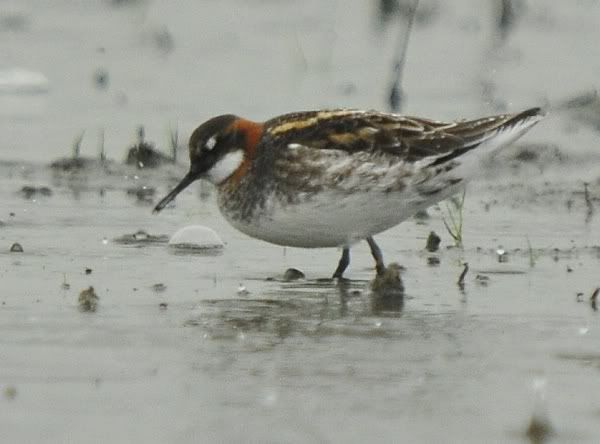 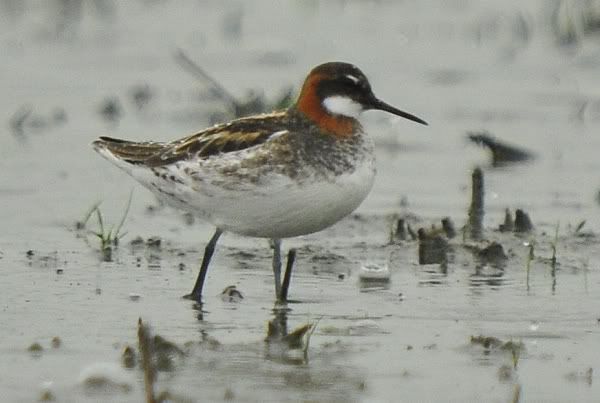 Not much larger than a Western Sandpiper 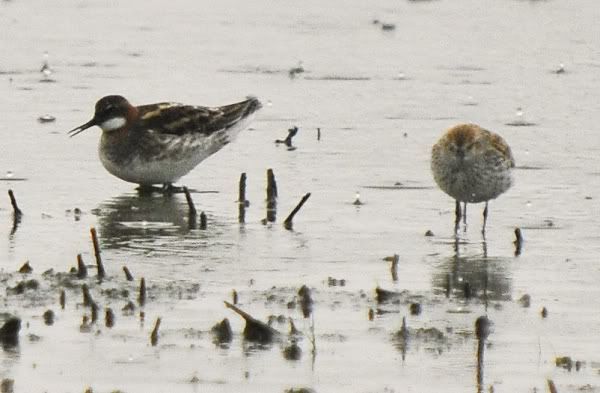 They also like to swim around and can be often found wintering far off shore on the open ocean. The three species of phalaropes have lobed toes which help with the paddling. It might also be interesting to note that the female Phalaropes are much more colourful than the males. Also, after the eggs are laid, the females take off and leave the egg incubating and raising of the young to the males. A rare example in the bird world where it is often the opposite. Red-necked Phalarope will continue north into the tundra but Wilson's will nest in the interior. 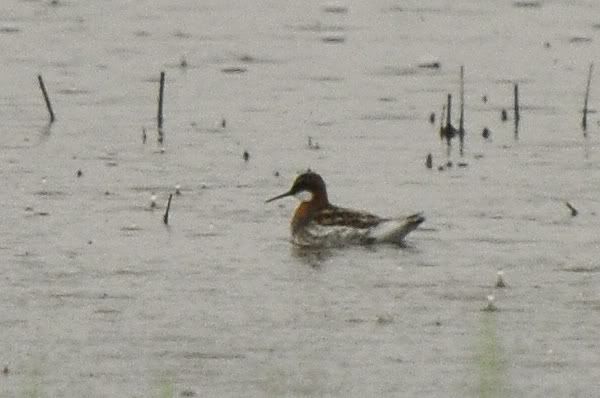 Wilson's Phalarope which is equally dashing. 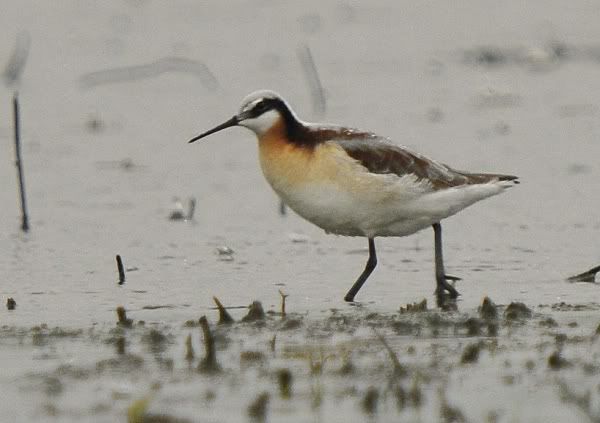 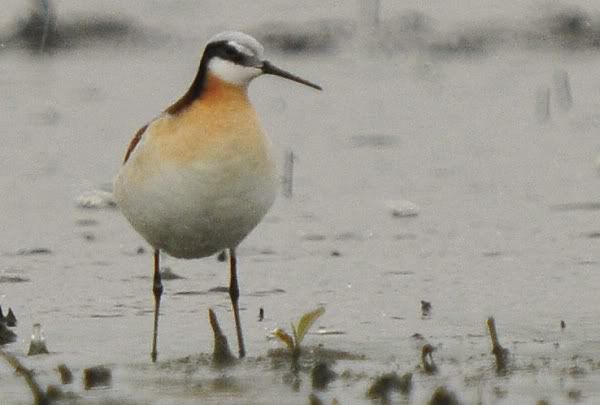 The lobed toes can sort of be seen here. 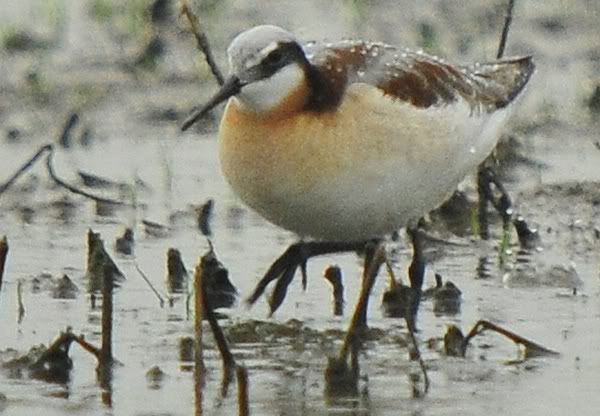 There were several Bank Swallows but hard to count as there were a great many swallows (all six swallow species; Tree, Violet-green, N. Rough-winged, Cliff, Barn and Bank) all buzzing around. The Bank Swallows stuck out a little with the pale rump and back contrasting with the dark wings. 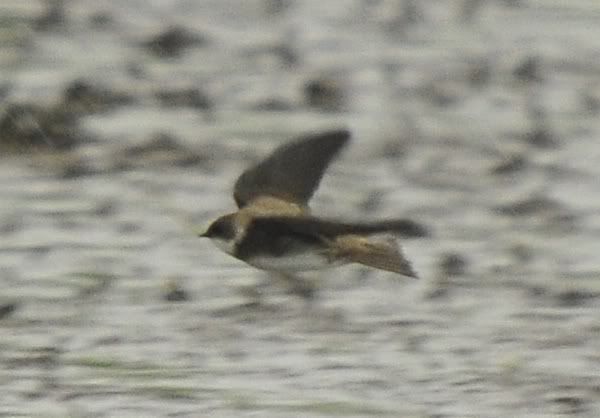 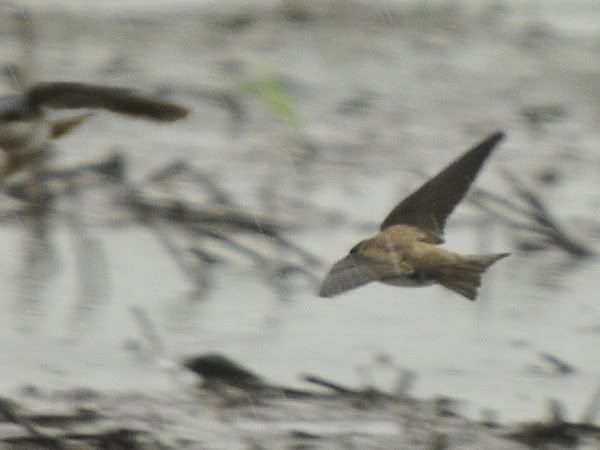 Also a male Brown-headed Cowbird with a strip of white feathering on its head.  |
|
|
|
Post by martin on May 13, 2011 11:17:28 GMT -8
Looked pretty wet, Gord. I had gone out yesterday eve but with the weather turning nice for the day I guess they all flew the coop, so to speek.  |
|